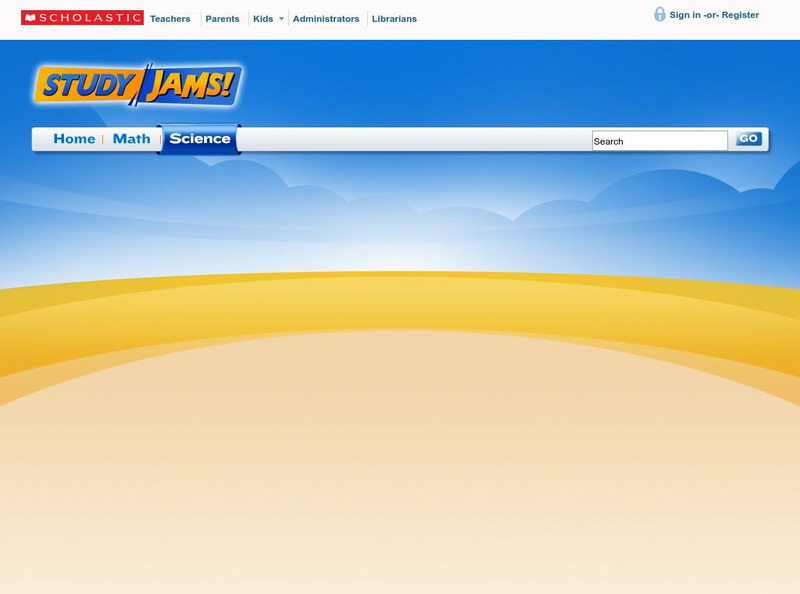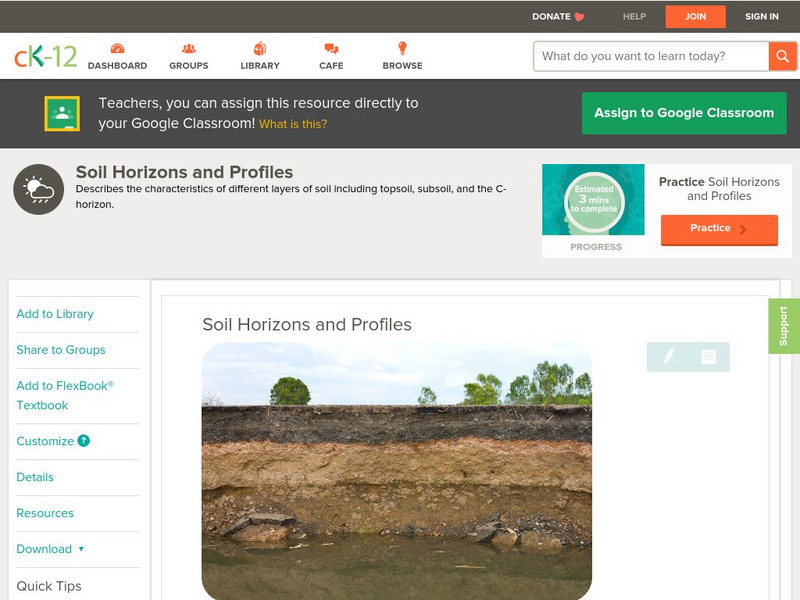K20 LEARN
How Does Your Garden Grow?
Seventy thousand different types of soil exist in the United States alone. Young scientists learn about the importance of soil to the food supply. They test soil for a variety of factors and determine the best place to set up a community...
College Board
2016 AP® Environmental Science Free-Response Questions
The average student scores less than three points, out of five, on the AP Environmental Science test. Most do well on the multiple choice and struggle with the free-response section. Encourage extra free-response practice with actual...
DiscoverE
Core Sampling
Simulate soil sample assemblages. Individuals create soil layers in a cup. They then use straws to collect core samples from these layers. What information can they glean from the core samples, I wonder?
Polar Trec
What Can We Learn from Sediments?
Varve: a deposit of cyclical sediments that help scientists determine historical climates. Individuals analyze the topography of a region and then study varve datasets from the same area. Using this information, they determine the...
NASA
The Case of the Wacky Water Cycle
Join the tree house detectives in learning about the processes of the water cycle, water conservation, water treatment, and water as a limited resource.
Curated OER
Regents High School Examination: Physical Setting Earth Science 2006
Test your class on earth science with this extensive resource. This test, created by The University of the State of New York Regents, is made up of 50 multiple choice questions and 32 short answer questions that cover the branches of...
Curated OER
Soils: One of Our Natural Resources
"God made dirt, so dirt don't hurt!" In fact, dirt is soil, which is an amazingly dynamic material that we cannot live without! Dig into the depths of soil development, topography, and layers with this PowerPoint. The photos are fuzzy,...
Curated OER
What is Soil?
Students examine soil. In this earth science lesson plan, students define and describe weathering and erosion as it relates to soil. Students compare and contrast potting soil with forest soil and complete a science observation worksheet.
Curated OER
Dig Into Soil
Students discuss what is found in soil. In this science instructional activity, students observe the soil outside and write down information in regards to location, vegetation, and topography. Students experiment with the soil and its...
Curated OER
Soil Profile
Fourth graders research soil layers and create a soil profile in a jar. In this soil profile lesson, 4th graders working in groups, research a given layer of soil, make a 3-5 minute presentation to the class, and complete a...
Curated OER
Layering the Soil
Students study and classify soil. In this soil science lesson, students classify soil by texture and size and study soil horizons. Students label the soil types with their specific soil horizon and learn about permafrost. Students...
Curated OER
Soil Formation
In this soil formation learning exercise, students will review examples of chemical weathering and biological weathering. Students will also review the different soil layers and how they are created. This learning exercise has 6...
Curated OER
What Makes Up Rocks and Soils?
In this rocks and soils instructional activity, students will complete a Venn diagram comparing the specific characteristics of rocks and soils.
Curated OER
What's Happening Below The Surface?
Students determine the soil composition of soil layers in their area. They collect soil samples, calculate the percentage soil water content, analyze data, and evaluate each site for future tree growth.
Science Buddies
Science Buddies: Get Down and Dirty: How Does Soil Change With Depth?
What covers less than 10% of the Earth's surface, yet is a vital natural resource for terrestrial life? What filters ground water and supports most of our food production, not to mention the production of building materials and paper?...
Discovery Education
Discovery Education: The Dirt on Soil
This interactive website explores the various soil layers and introduces you to the lifeforms that live in those soil layers.
Utah Education Network
Uen: Sand, Clay and Humus
Fourth graders study the differences between humus, sand, and clay soil.
Utah Education Network
Uen: Nhmu: Our Ancient Earth the Stratigraphy Cup
Activity provides students an opportunity to make a stratigraphy cup.
Scholastic
Scholastic: Study Jams! Science: Landforms, Rocks & Minerals: Soil
A slideshow and a short multiple-choice quiz on the topic of soil and its importance to living things.
CK-12 Foundation
Ck 12: Earth Science: Soil Horizons and Profiles
[Free Registration/Login may be required to access all resource tools.] Describes the different layers of soil.
CK-12 Foundation
Ck 12: Earth Science: Soil Horizons and Profiles
[Free Registration/Login may be required to access all resource tools.] Describes the different layers of soil.
Alabama Learning Exchange
Alex: Digging in for Dirt Day!
This lesson is managed through stations that students will rotate around every 20- 30 minutes. Each second grade teacher conducts one station. Parent volunteers can also be used to manage stations. Students will use an auger to gather...
Utah Education Network
Uen: Investigation 6 Soil Profile
In this hands-on lesson plan, learners investigate the properties of different layers of soil.
Enchanted Learning
Enchanted Learning: Soil Layers
Wonderful visual chart showing the six layers of soil. Also includes brief descriptions of the 12 types of soil and soil formation. Worksheet for students to label the layers of the soil is also included.






















